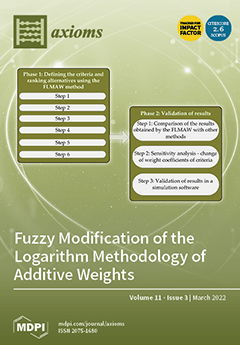Let (
X,
d) be a metric linear space and
a∈
X. The point
a divides the space into three sets:
Ha = {
x ∈
X:
d(0,
x) <
d(
x,a)},
Ma = {
x ∈
X:
d(0,
x) =
d(
x,
a)} and
La = {
x ∈
X:
d(0,
x) >
d(
x,
a)}. If the distance is generated by a norm,
Ha is called
the Leibnizian halfspace of a, Ma is the perpendicular bisector of the segment 0,
a and
La is the remaining set
La = X\(
Ha∪
Ma). It is known that the perpendicular bisector of the segment [0,
a] is an affine subspace of
X for all
a ∈
X if, and only if,
X is an inner product space, that is, if and only if the norm is generated by an inner product. In this case, it is also true that if
x,y ∈
La ∪
Ma, then
x + y ∈
La∪
Ma. Otherwise written, the set
La∪
Ma is a semi-group with respect to addition. We investigate the problem:
for what kind of norms in X the pair (
La ∪
Ma,+)
is a semi-group for all a ∈
X? In that case, we say that “
has the semi-group property” or that “the norm
has the semi-group property”. This is a threedimensional property, meaning that if all the three-dimensional subspaces of
X have it, then
X also has it. We prove that for two-dimensional spaces, (
La,+) is a semi-group for any norm, that
has the semi-group property if, and only if, the norm is strictly convex, and, in higher dimensions, the property fails to be true even if the norm is strictly convex. Moreover, studying the
Lp norms in higher dimensions, we prove that the semi-group property holds if, and only if,
p = 2. This fact leads us to the conjecture that in dimensions greater than three, the semi-group property holds if, and only if,
X is an inner-product space.
Full article




